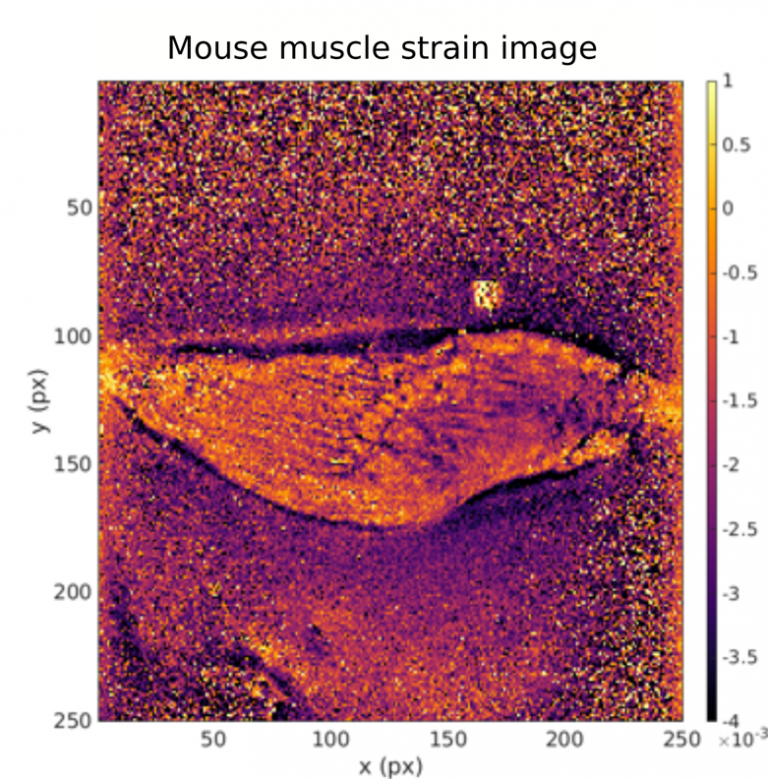NOW CLOSED- Optical coherence elastography:using touch and artificial intelligence to detect cancer
A four-year fully funded PhD studentship, co-funded by the Royal Society - Application Deadline: 4th January 2023

6 December 2022
Primary Supervisor: Professor Peter Munro
Secondary Supervisor: Dr Sami Sahmed, Professor Simon Arridge
Project Summary
A four-year fully funded PhD studentship, co-funded by the Royal Society, is available in UCL’s Computational Optics Group within the Department of Medical Physics. The successful candidate will be part of the UCL CDT in Intelligent, Integrated Imaging in Healthcare (i4health) and will benefit from the activities and events organised by the centre. The project will involve close interaction with researchers from UCL Hospital. The successful applicant can start at the beginning of the 2023/2024 academic year, or earlier.
Background
Oesophageal cancer is one of four cancers of “unmet need” (Cancer Research UK) mainly due to its poor survival rates and late diagnosis. Significant deficiencies exist at all stages of surveillance, staging, and treatment. We aim to overcome this problem using optical Coherence Elastography (OCE), which images tissue mechanical properties, in three-dimensions, with very high sensitivity, at a spatial resolution approaching that of single cells. OCE is yet to be applied to oesophageal cancer, however, its impact in breast imaging (see https://www.oncoresmedical.com/) suggests that it will find clinical application in oesophageal cancer imaging.
OCE is inspired by the sense of touch that clinicians have used for centuries when diagnosing disease. OCE uses optical coherence tomography (OCT) to measure how tissue deforms when a compressive force is applied. Simplistically, the more tissue deforms, the softer it is. It is because of OCT’s nanometer scale displacement sensitivity that OCE has an unrivalled sensitivity to small variations in stiffness. Despite its success in breast cancer imaging, OCE is still limited by its ability to retrieve tissue stiffness from the raw OCT images, largely due to the speckled nature of OCT images.
Research Aims
The overarching aim is to improve how oesophageal cancer is diagnosed and treated by developing a novel in room, real time, functional OCE-based imaging system based on existing OCE system developed by Prof. Munro. The key innovation in this project will be a combination of hardware improvements and the development of a novel approach to tissue stiffness retrieval based upon the underlying physics of optical coherence tomography combined with deep learning.
Our specific aims, to be carried out by the successful student, are:
- Adapt an existing OCE imaging system (hardware and software) to the specific requirements of imaging oesophageal tissue oesophageal biopsy samples.
- Evaluate and adapt an existing model-based approach to tissue-stiffness retrieval technique for oesophageal tissue.
- Develop a deep learning approach to stiffness retrieval and compare with the model-based approach. We will initially use simulated OCE data in a supervised training approach and then investigate unpaired and unsupervised training schemes as well as generative adversarial methods and transfer learning.
- Investigate combining learned and model-based approaches to stiffness retrieval using a learned iterative scheme.
- Evaluate the ability of the system (ex-vivo in the lab) to differentiate between normal and dysplastic/malignant tissue using conventional histopathology as the reference standard.
- Perform a preliminary examination of the whole range of tissue types (normal, low and high grade dysplasia arising in Barrett’s oesophagus, intramucosal and invasive cancer) in order to understand where OCE performs best.
This successful student will participate in all aspects of the translation of this technique from the lab to the clinic, including hardware, software and pre-clinical imaging. This will provide an excellent background for progressing on to employment in either academia or industry, in fields such as healthcare technologies or data science. Results permitting, this project may also lead to the creation of a spin-out company to translate the developed technique into routine clinical use.
Person specification & requirements:
This studentship is only open to students that are eligible for Home Fee status, please see https://www.ucl.ac.uk/students/fees-and-funding/pay-your-fees/fee-schedules/student-fee-status for more details.
Applicants are generally expected to have, or expect to obtain, a UK first class or 2:1 honours degree (or equivalent international qualifications or experience) in physics, engineering, mathematics or related subjects.
Application Deadline: 4th January 2023.
How to apply:
Please complete the following steps to apply.
- Send an expression of interest and current CV to: p.munro@ucl.ac.uk and cdtadmin@ucl.ac.uk .Please quote Project Code: 23007
- Make a formal application to via the UCL Application portal . Please select the programme code Medical Imaging TMRMEISING01 and enter Project Code 23007 under ‘Name of Award 1’
 Close
Close

